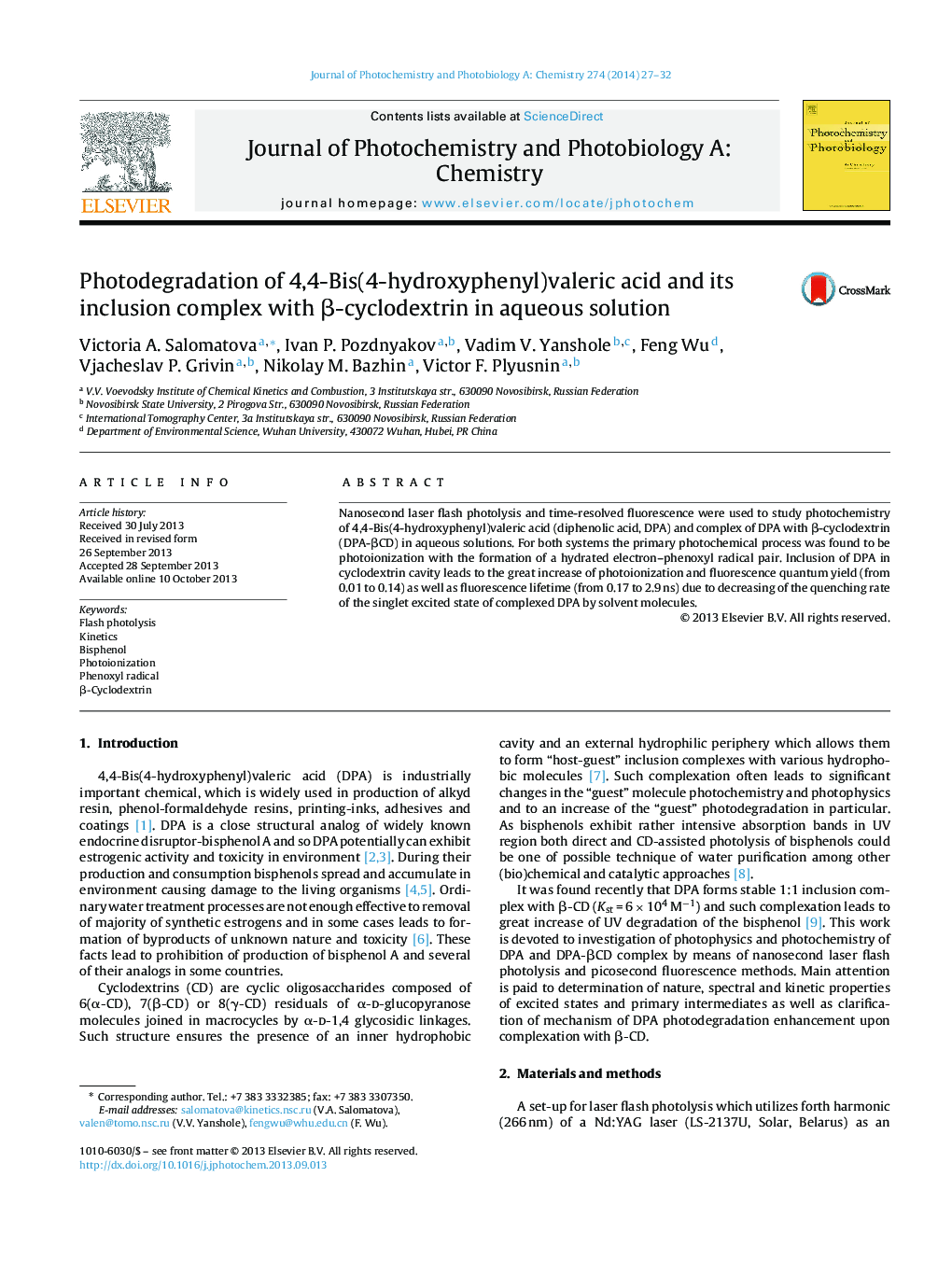| Article ID | Journal | Published Year | Pages | File Type |
|---|---|---|---|---|
| 26772 | Journal of Photochemistry and Photobiology A: Chemistry | 2014 | 6 Pages |
•Mechanistic aspects of enhancement of diphenolic acid photodegradation in inclusion complex with β-cyclodextrin were studied by nanosecond laser flash photolysis and picosecond fluorescence.•Photoionization was found to be the main primary photochemical process.•Complexation with β-CD leads to increase both photoionization and photodegradation quantum yields of the bisphenol.•In presence of oxygen phenoxyl radical formed decays in reactions with superoxide anion-radical and self-coupling.•The main primary photoproduct is hydroxylated DPA.
Nanosecond laser flash photolysis and time-resolved fluorescence were used to study photochemistry of 4,4-Bis(4-hydroxyphenyl)valeric acid (diphenolic acid, DPA) and complex of DPA with β-cyclodextrin (DPA-βCD) in aqueous solutions. For both systems the primary photochemical process was found to be photoionization with the formation of a hydrated electron–phenoxyl radical pair. Inclusion of DPA in cyclodextrin cavity leads to the great increase of photoionization and fluorescence quantum yield (from 0.01 to 0.14) as well as fluorescence lifetime (from 0.17 to 2.9 ns) due to decreasing of the quenching rate of the singlet excited state of complexed DPA by solvent molecules.
Graphical abstractFigure optionsDownload full-size imageDownload as PowerPoint slide
